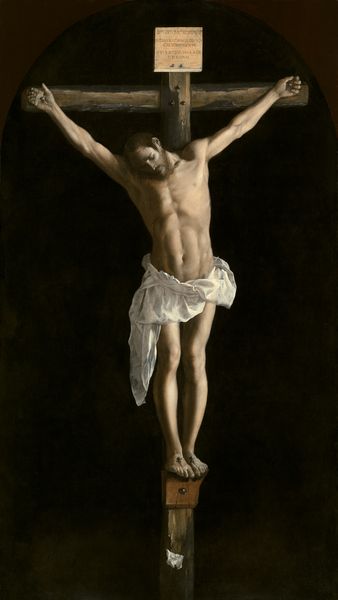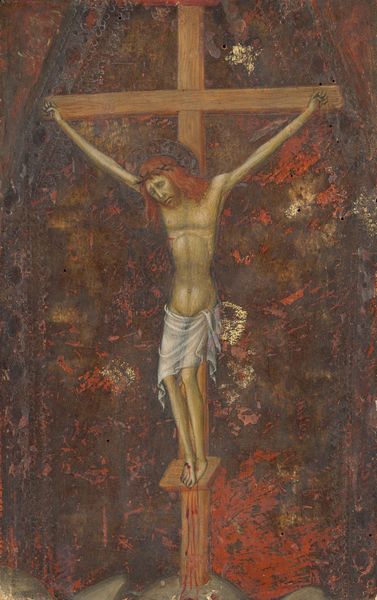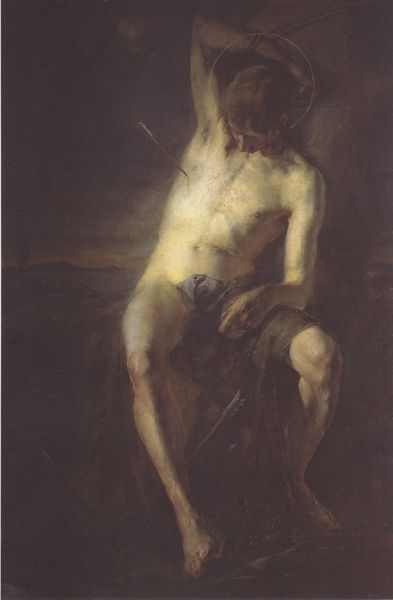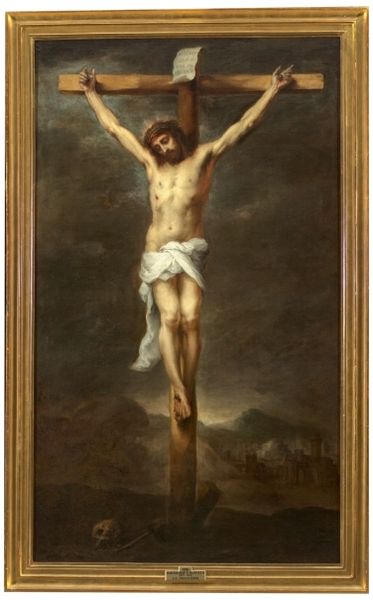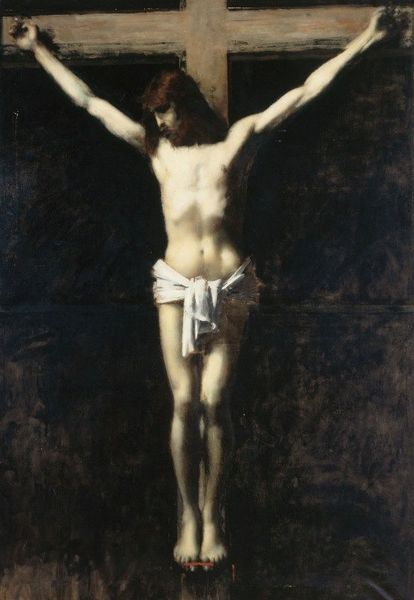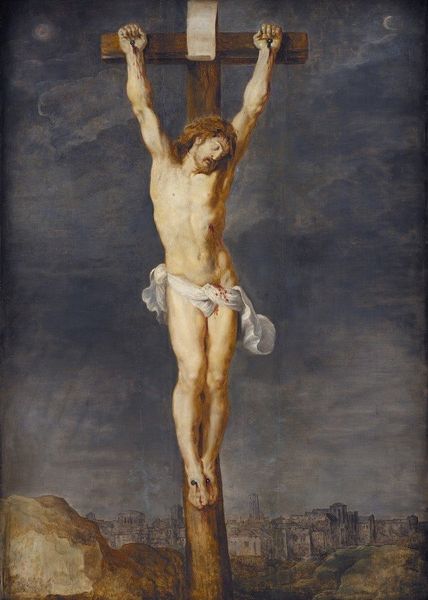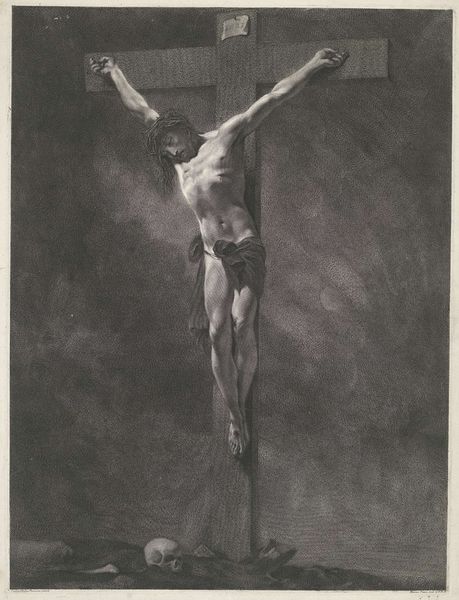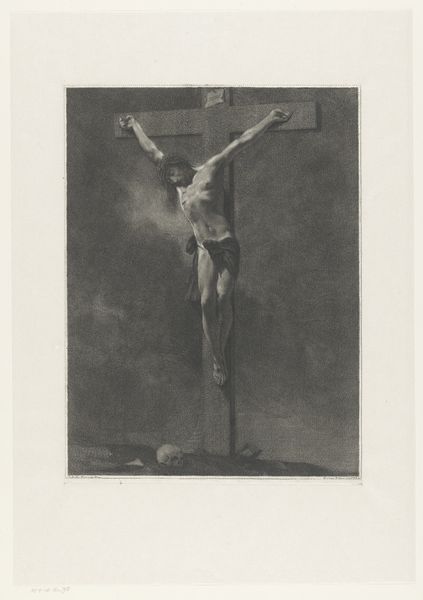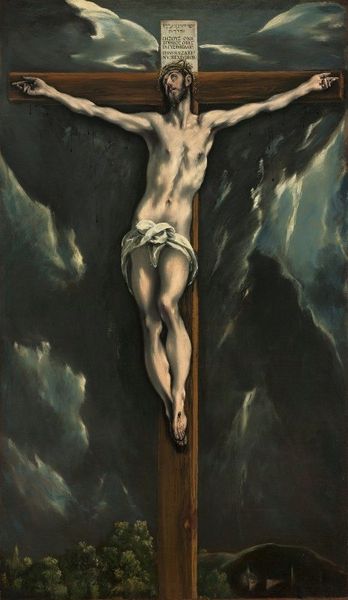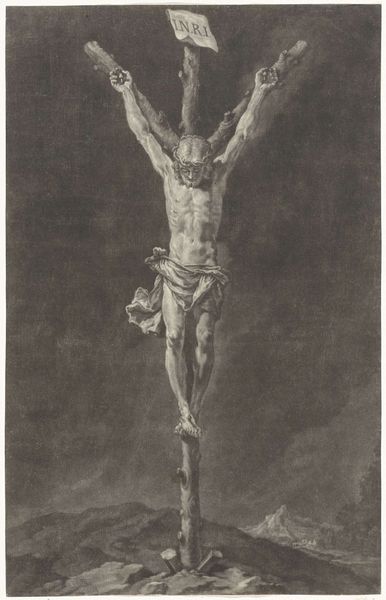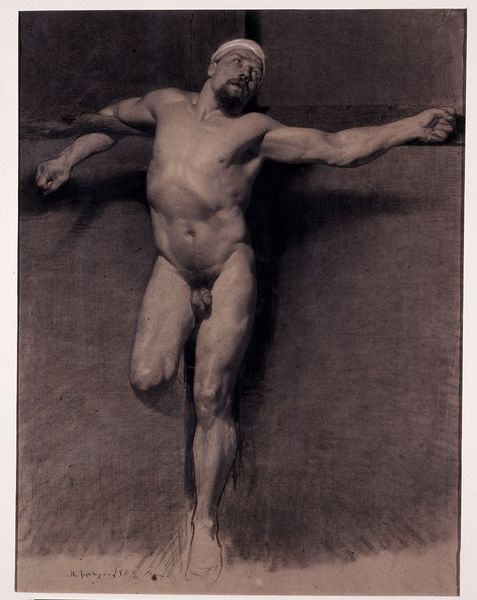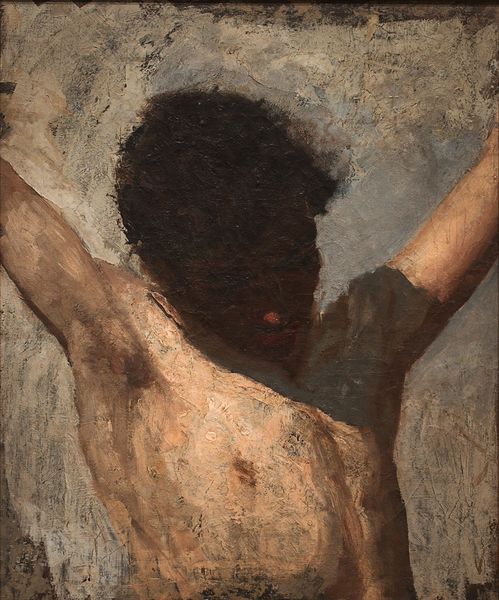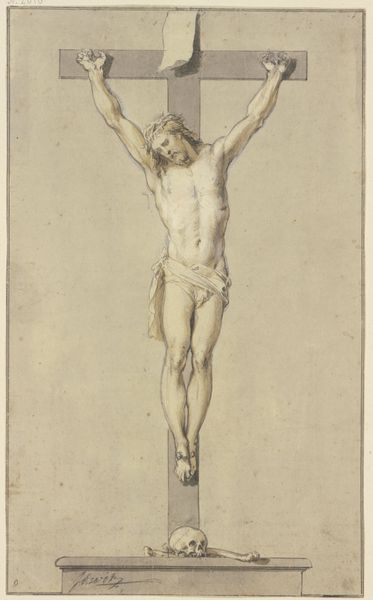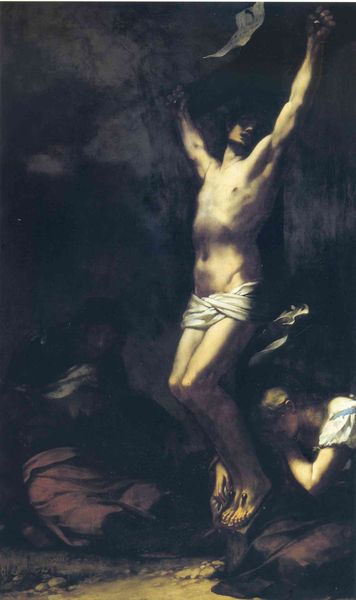
painting, oil-paint
#
baroque
#
painting
#
oil-paint
#
figuration
#
crucifixion
#
history-painting
#
nude
#
realism
Dimensions: 14.4 x 9.4 x min. 0.2 cm
Copyright: Public Domain
Adam Elsheimer painted this ‘Christ Crucified’ on copper in the early 17th century. Copper was not a traditional art material; it was sourced through industrial processes, mined, smelted, and then processed into sheets. Here, the cold, hard, reflective surface of the copper adds to the painting's somber mood. The artist worked with oil paint, layering dark glazes to build up the image. The smoothness of the copper allowed for minute details, like the crown of thorns and the skeletal figure at the base of the cross. Painting on copper was painstaking and required great skill. The artist would have needed to know how to prepare the surface, apply the paint in thin layers, and control the drying time. The labor involved in this piece is a testament to Elsheimer's dedication to his craft. Thinking about materials, making, and context helps us understand the full meaning of this artwork, challenging traditional distinctions between fine art and craft.
Comments
No comments
Be the first to comment and join the conversation on the ultimate creative platform.
